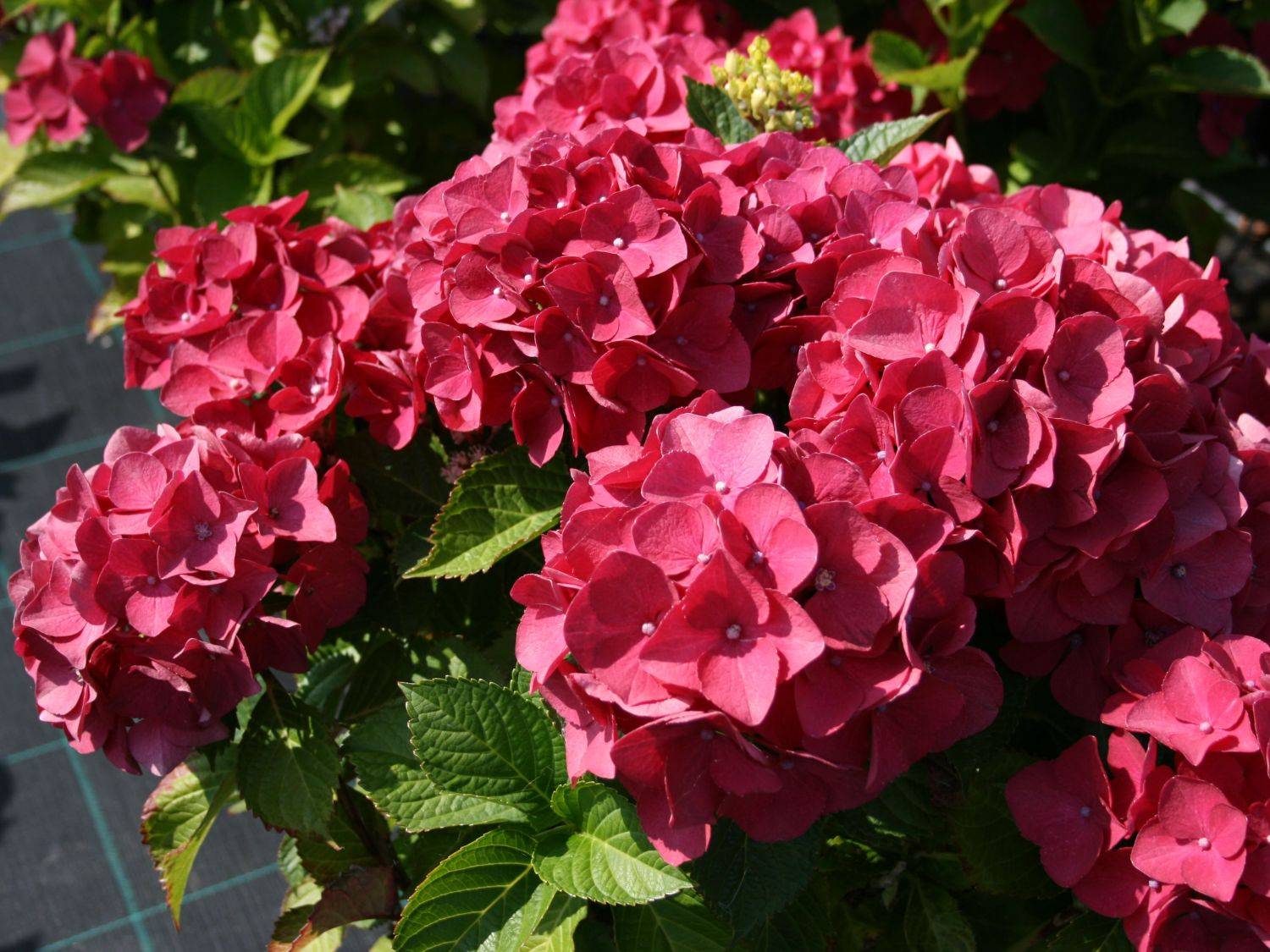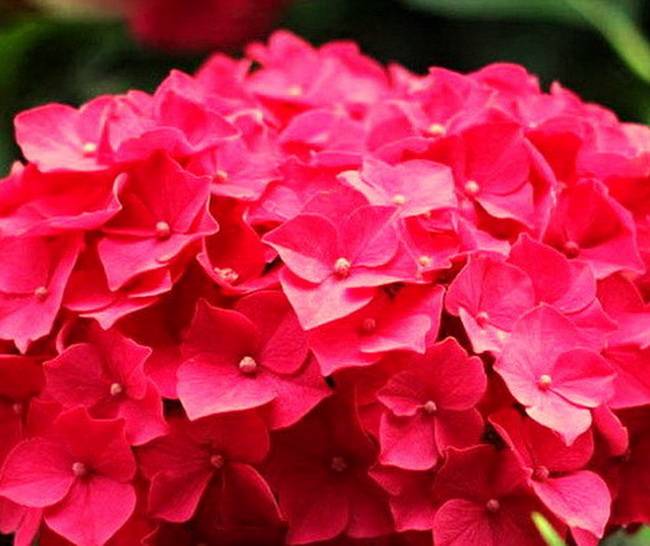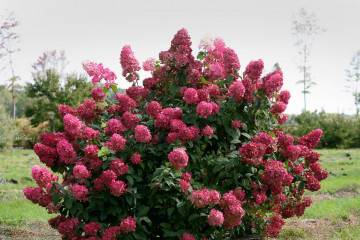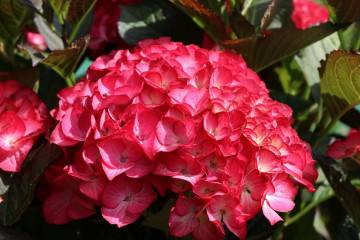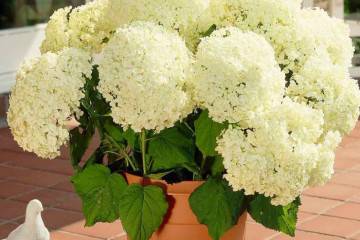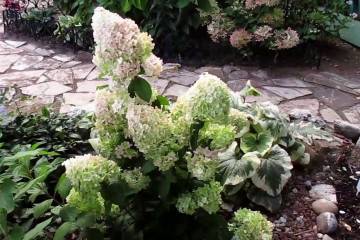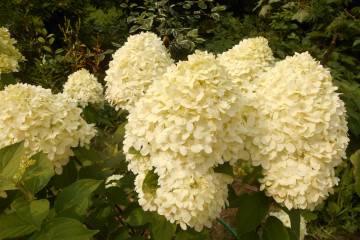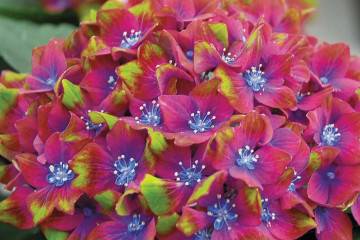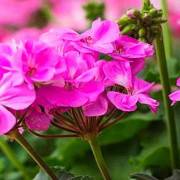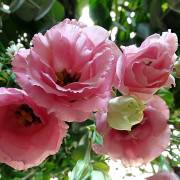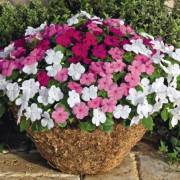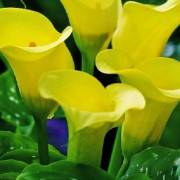Hydrangea Hot Red - variety description, planting and care
Content:
Bright inflorescences, more like fireballs, dark green foliage, sweet floral scent ... No wonder the Hot Red hydrangea is popular with gardeners from different countries. It is incredibly effective, moreover, compact, which allows you to plant it even in a small area. Planting and caring for a hydrangea is quite simple, and a novice florist can cope with them.
Description of the Hot Red hydrangea variety and its characteristics
Hydrangeas of this variety are incredibly bright, the color of the petals can be carmine red or bright scarlet. Large-leaved variety is characterized by increased winter hardiness, flowering duration.
History of origin
The appearance of this culture in the gardens of domestic florists would have been impossible if it were not for the French navigators. Travelers in the distant 17th century. brought this plant from about. Mauritius. It is for this reason that any variety, any series of hydrangeas is called French.
Features of the variety
The bush is spherical, capable of reaching a diameter of about 100 cm.Annually, its growth is 20 cm.
The inflorescences are collected in neat balls, the diameter of which can reach 15 cm. Delicate flowers have core beads. The tone of the petals depends not so much on the variety as on the composition of the soil. For example, a plant planted in acidic soil has bright purple hues. A neutral pH leads to the fact that the flowers become dull, yellow notes are completely absent. As the inflorescences wilt, they acquire a pale pink tone.
Planting and further care
It is recommended to start preparing the soil for this variety of hydrangeas 6 months before planting it in a permanent place. The best time for this is autumn. A trench should be dug into which the drainage layer and compost will need to be laid.
Planting material must be germinated in a nutrient medium. When replanting a hydrangea in open ground, the plant must be dug in and moistened. The distance between the bushes should not be less than one and a half meters, only in this case the large-leaved variety Hot Red will be able to develop normally.
Hydrangea needs a lot of moisture, the soil under the bush should not dry out. Plants should be fed only four times during the growing season. It is best to use a complex fertilizer for hydrangeas.
In early spring, a shrub that has already turned four years old should be cut off: excess, dry and damaged branches need to be removed.
In the southern regions, the plant does not need shelter for the winter; in unfavorable climatic conditions, a polyethylene greenhouse should be created. According to the description, the Hot Red hydrangea has a high frost resistance, it can withstand cold snaps down to -20 ° C.
Reproduction
You can propagate Hot Red using cuttings sprouting yourself. The branches must be carefully cut, immersed in a growth stimulator. Then the cuttings should be buried in a container with soil and removed to a dark, warm place, after covering it with a film.
Diseases and pests
The treatment of culture is a laborious process, which is why experienced gardeners recommend not to forget about preventive measures. To prevent the shrub from being attacked by caterpillars, beetles, spider mites and aphids, as well as various ailments, treatment with insecticides and fungicides should be carried out from time to time. It is important to take care of the plant - remove weeds, prune.
Use in landscape design
Borders of cotoneaster and spirits will help to emphasize the beauty of bright red hydrangea. The shrub is also combined with cereals, conifers, clematis.
With proper care, the Hot Red hydrangea can become a real queen of the garden - and delight the grower for many years. She will decorate gazebos and paths, will look great as a hedge.
